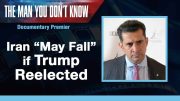
Leaders of the Trans-Pacific Partnership (TPP) and the text of the agreement itself admit that the TPP is the foundation for the development of the Free Trade Area of the Asia Pacific (FTAAP).
The TPP, or Trans-Pacific Partnership, is a proposed so-called “free trade” agreement negotiated among 12 Pacific Rim nations (Australia, Brunei, Canada, Chile, Japan, Malaysia, Mexico, New Zealand, Peru, Singapore, the United States, and Vietnam) representing 40 percent of world GDP. On October 5, 2015, U.S. Trade Representative Michael Froman announced that the United States and the 11 other participating Pacific Rim nations had reached a final agreement on the TPP.
The FTAAP, or Free Trade Area of the Asia Pacific, is another proposed regional “free trade” agreement that would include all 21 Asia-Pacific Economic Cooperation (APEC) countries (Australia, Brunei, Canada, Chile, Communist China, Hong Kong, Indonesia, Japan, Malaysia, Mexico, New Zealand, Papua New Guinea, Peru, Philippines, Russia, Singapore, South Korea, Taiwan, Thailand, the United States, and Vietnam).
APEC is a self-described “economic forum” created in 1989 to promote “free and open trade” and “accelerating regional economic integration” in the Asia-Pacific region.
As The New American recently reported about the APEC CEO Summit, hosted in Manila, Philippines (November 16-18), APEC leaders reaffirmed their commitment to the proposed FTAAP through the implementation of regional “trade” schemes, specifically naming the Trans-Pacific Partnership.
“We reiterate our commitment to achieve the Bogor Goals of free and open trade and investment by 2020 and to the eventual realization of the Free Trade Area of the Asia-Pacific (FTAAP),” the APEC “2015 Leaders’ Declaration” said. Down toward the end of the declaration, it further stated:
We reiterate our belief that the FTAAP should be pursued as a comprehensive free trade agreement by building on ongoing regional undertakings…. In this connection, we note the recent development on the free trade agreements in the region and the progress of the possible Pathways to the FTAAP, including the finalization of Trans-Pacific Partnership (TPP) negotiations.
The Leaders’ Declaration is a joint declaration made by and agreed to by the leaders (presidents and prime ministers) of all 21 APEC member states. In addition to the APEC “2015 Leaders’ Declaration,” various TPP leaders and countries have also admitted that their goal is to facilitate the creation of the FTAAP.
On November 13, 2015, the Canadian-based think-tank Asia Pacific Foundation of Canada (APF Canada) published an article entitled “A Forum for the Future: APEC is Key to Canada’s Engagement in Asia.” In it APF Canada described the TPP as the “foundation” for the FTAAP:
We need only look at regional trade initiatives such as the Trans-Pacific Partnership (TPP) and the foundation it has laid for a Free Trade Area of the Asia Pacific (FTAAP), as well as the potential for micro-, small- and medium-sized enterprises in Asia (MSMEs), to see how APEC can help sow new seeds for Canada’s engagement with the Asia Pacific region. [Emphasis added.]
Of the envisioned FTAAP, APC FTAAP further detailed:
Over the past 10 years, the 21 APEC members have been working towards the development of an FTAAP to allow for free and open trade and investment across one of the world’s largest economic zones. Studies conducted by the Pacific Economic Cooperation Council have forecasted that the gains from an FTAAP — approximately US$2 trillion by 2025 — would be eight times that projected from the TPP.
On November 19, 2015, an official press statement released by the White House entitled “Fact Sheet: 23rd Annual APEC Economic Leaders’ Meeting” stated that APEC leaders (including the United States) “expanded trade and investment liberalization by: … Welcoming progress on the Collective Strategic Study on Issues Related to the Realization of the Free Trade Area of the Asia Pacific (FTAAP).”
On November 19, 2015, in an official press statement made during the APEC summit, Mexican President Enrique Peña Nieto expressed his desire for an APEC-wide “free trade agreement” or FTAAP. “And finally, the APEC meeting, which convened this group of countries, 21 countries that are part of the group of economic cooperation in the Asia-Pacific region, and whose purpose is to achieve a free trade agreement in what I hope is the not too distant future,” President Peña Nieto said. (Emphasis added.)
Last year, on November 12, 2014, Chilean President Michelle Bachelet, who also attended the recent 2015 APEC CEO summit, called for an APEC-wide free trade agreement. “Perhaps the single most important fact is to start taking additional fast steps to, in in the not too distant future, sign a free trade agreement between all countries in the Asia Pacific and particularly among the 21 economies that are part of APEC,” President Bachelet said. (Translated from Spanish.)
On November 18, 2015, in a televised interview with Alto Broadcasting System-Chronicle Broadcasting Network (ABS-CBN) in the Philippines, New Zealand Prime Minister John Key welcomed the idea of non-TPP APEC member states to eventually join the TPP.
“From New Zealand’s point of view, I think we take the view of the more the merrier… We’d be more than happy for other countries to come in,” Prime Minister Key told ABS-CBN.
Prime Minister Key’s hope for additional APEC-member inclusion into the TPP corroborates a 2014 United Nations report that suggested TPP expansion as one of three possible pathways toward the development of the FTAAP.
The December 2014 issue of Trade Insights, an official publication of the United Nations Economic and Social Commission for Asia and the Pacific (ESCAP), stated, “The FTAAP could be built either on the basis of the TPP, RCEP or a hybrid of both. The TPP is the more likely option given its probably higher standards. If China were to join the TPP, then TPP would emerge as the natural platform to bring in other potential FTAAP members.” (Emphasis added.)
The RCEP, or Regional Comprehensive Economic Partnership, is another proposed regional “free trade” agreement among 16 countries (Australia, Brunei, Cambodia, China, India, Indonesia, Japan, Laos, Malaysia, Myanmar, New Zealand, Philippines, Singapore, South Korea, Thailand, and Vietnam). With approximately three billion people living in these 16 countries, the RCEP represents about 41 percent of the world’s population and accounts for over 30 percent of world GDP.
The three possible pathways for FTAAP include 1) expanding the TPP into becoming the FTAAP, 2) expanding the RCEP into becoming the FTAAP, or 3) a “hybrid of both,” i.e. merging both the TPP and RCEP into becoming the FTAAP. With the exception of the second scenario, which is unlikely given the advanced progress already made on the TPP, both the first and third scenarios depend upon TPP expansion as crucial for the creation of the FTAAP. Nevertheless the UN document makes it clear that not only is TPP expansion the most likely route to facilitate the FTAAP, but it also speaks optimistically of China joining the TPP in order to achieve the FTAAP, of which The New American has previously reported on numerous occasions (See here, here, here, and here).
However, if even with the APEC “2015 Leader’s Declaration,” the statements made by various TPP-member leaders, and reports from APF Canada, and the United Nations ESCAP, one remains unconvinced that the objective of the TPP is to facilitate the FTAAP, then one need not look any further that the preamble of the TPP document itself. On page two of the two-page TPP preamble, the final point reads:
EXPAND their partnership by encouraging the accession of other States or separate customs territories in order to further enhance regional economic integration and create the foundation of a Free Trade Area of the Asia Pacific.
Furthermore, chapter 30 of the TPP agreement, entitled “Final Provisions,” opens TPP membership to APEC member states. Article 30.4 of chapter 30 of the TPP reads:
Article 30.4: Accession
1. This Agreement is open to accession by:
(a) any State or separate customs territory that is a member of APEC, and
(b) such other State or separate customs territory as the Parties may agree,
that is prepared to comply with the obligations set out in the Agreement, subject to such terms and conditions as may be agreed between the State or customs territory and the Parties, and following approval in accordance with the applicable legal procedures of each Party and acceding State or customs territory.
Undeniably, despite much disinformation disseminated by the Wall Street Journal and Fox News, the facts speak for themselves: The TPP’s goal is to serve as the foundation for the much larger Free Trade Area of the Asia-Pacific, which would not only include the United States but all APEC member states including Communist China and Russia.
Related articles:
APEC Summit Reaffirms Commitment to FTAAP Through TPP
China Bids for Sheraton/Westin Hotels; TPP Will Help Beijing Buyouts
Trump Correct About TPP and China
Secretary John Kerry Invites Russia and China into TPP
Secret TPP Text Released: GOP to Push Obama’s Dangerous Trade Deal
Russia’s Backdoor Participation in the Trans-Pacific Partnership (TPP)
China Seeks to Join Trans-Pacific Partnership (TPP)
Globalists Now Pushing To Bring China Into TPP
Chinese Diplomat: TPP, FTAAP “Compatible; Complement Each Other”





